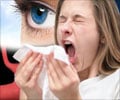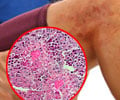Children born by caesarean section are at a 20 percent greater risk of developing asthma, a new review of previous research has concluded. According to the researchers, the findings may shed more light on the soaring incidence of asthma in recent decades.
It has been shown previously to that babies born naturally are exposed to maternal vaginal and intestinal bacteria, while babies delivered by c-section are not. Researchers have suggested that this may create an early-life exercise for the immune system, helping infants to identify and fight pathogens.Researchers supporting the 'hygiene hypothesis' argue that a lack of exposure to such pathogens can be bad for the immune system. They theorize that in the absence of such exposure, immune systems become sensitised to harmless materials, for example, dust or pollen, consequently resulting in conditions such as allergies and asthma.
"Too hygienic a birth without a welcome dose of mother's microbes might give rise to a hypersensitive future in a genetically susceptible baby," Nature quoted allergist Maria Pesonen of the Helsinki Skin and Allergy Hospital in Finland, as saying.
In the current review, Suren Thavagnanam at the Royal Belfast Hospital for Sick Children in Northern Ireland and his colleagues conducted a meta-analysis of the results from 22 previous studies on the subject, to see whether they could get a firmer answer from more data.
“The data were highly conflicting, we didn’t know what to expect,” said co-author Mike Shields, a respiratory paediatrician at Queen’s University Belfast. After thorough analysis, the team revealed that there is a 20 percent increase in asthma risk in children delivered by c-section. "That's an eyebrow-raising figure," said Pesonen.
She notes that meta-analyses can give misleading results if the studies they are comparing have different methodologies, so "it may be that the 20 percent is an overestimate".
Advertisement
The findings are published in Clinical and Experimental Allergy 1.
Advertisement
LIN/C











